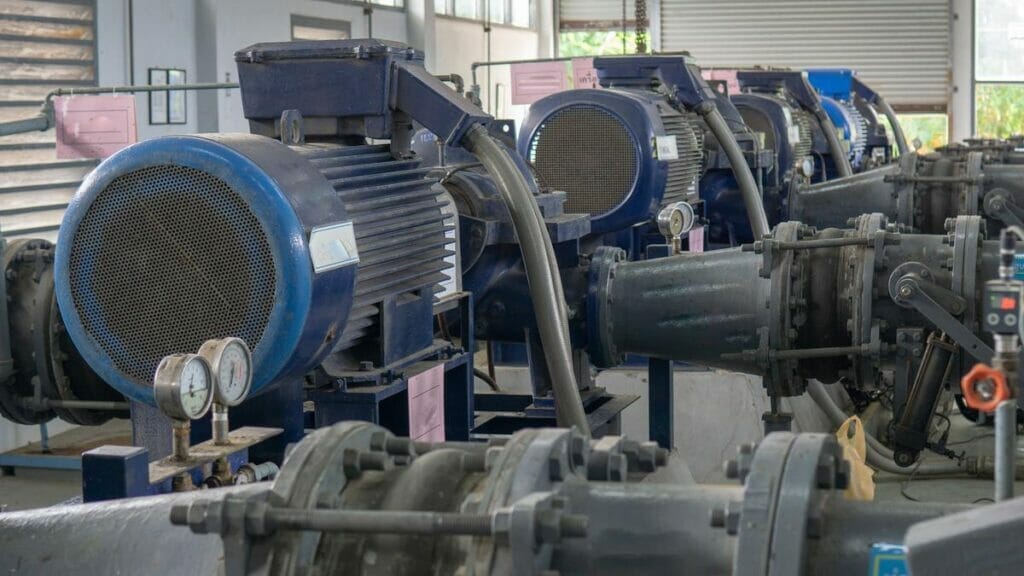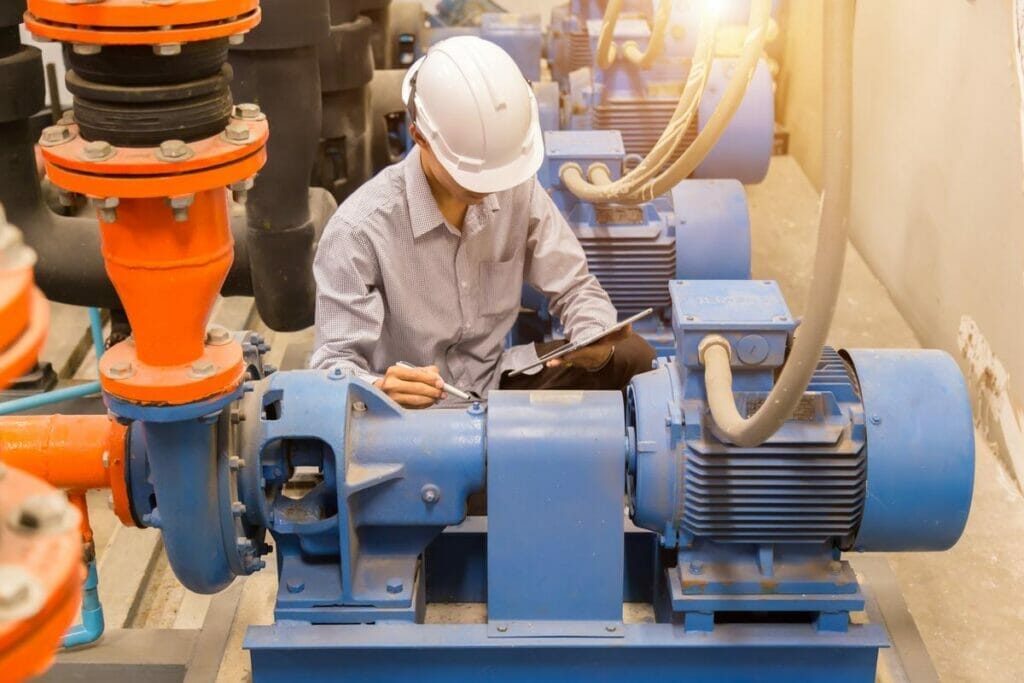What happens when a pump runs backward? In this blog post, we’ll explore the consequences of reverse pump operation. By understanding the risks and implications of backward pump rotation, you’ll be better equipped to prevent costly mistakes and maintain optimal pumping systems.

Symptoms of Pump Running Backwards
Reduced Efficiency
The impeller is designed to move fluid in a specific direction, and reversing the rotation disrupts this process. As a result, the pump consumes more energy to maintain its operation, leading to increased power consumption and higher operating costs. The pump’s inability to efficiently move the fluid can also lead to decreased flow rates and lower overall system performance.
Cavitation
Cavitation is a common issue that arises when a pump runs backwards. This phenomenon occurs when the pressure within the pump drops below the vapor pressure of the fluid, causing the formation of vapor bubbles. As these bubbles collapse, they create intense shockwaves that can damage the pump’s internal components, such as the impeller, bearings, and seals. Cavitation can also cause excessive noise and vibration, further contributing to the pump’s deterioration.
Mechanical Damage
The reversed rotation places undue stress on the impeller, shaft, and bearings, as they are forced to operate in a manner for which they were not designed. This stress can lead to accelerated wear and tear, reducing the pump’s lifespan and increasing the likelihood of premature failure. In some cases, the mechanical damage may be severe enough to render the pump inoperable.
Overheating
The reversed rotation can cause the pump to work harder, generating excess heat that cannot be effectively dissipated. This heat buildup can damage the pump’s internal components, such as the seals and bearings, and may even lead to the breakdown of lubricants. Overheating can also cause the pump to expand and contract, leading to misalignment and further mechanical issues.
Reduced Flow and Pressure
When a pump runs backwards, its ability to generate the desired flow and pressure is severely compromised. The reversed rotation of the impeller hinders the pump’s capacity to effectively move the fluid, resulting in reduced flow rates and lower discharge pressure. This can have a cascading effect on the entire system, causing inadequate fluid delivery, poor performance, and potential damage to downstream equipment.
Potential for Contamination
Running a pump backwards can also increase the risk of contamination. In some cases, the reversed rotation may cause the pump to draw fluid from the discharge side, potentially introducing contaminants into the system. Contamination can lead to product spoilage, equipment damage, and costly downtime.

Causes of Pump Running Backward
Phase Reversal
Phase reversal occurs when the electrical phases supplying power to the pump motor are accidentally swapped. This causes the motor to rotate in the opposite direction, leading to the pump running backward.
Back Flow
Back flow is a situation where fluid flows in the reverse direction through the pump. This can be caused by a higher pressure on the discharge side of the pump compared to the suction side. Back flow can force the pump to rotate in the opposite direction, causing it to run backward.
Incorrect Wiring of Three-Phase Power
Pumps powered by three-phase electrical systems require proper wiring to ensure correct rotation. If the wiring is incorrect or the phases are not connected in the proper sequence, the pump motor may run in the reverse direction, causing the pump to operate backward.
Installing Parallel Pump Where One Pump is Off
When installing parallel pumps, if one pump is turned off while the other is running, the pressure differential can cause the inactive pump to rotate backward due to the flow from the active pump.

How to Prevent Pump Running Backward
Check valves
Check valves are an effective way to prevent pumps from running backward. They are installed in the discharge line of the pump and only allow fluid to flow in one direction. When the pump stops or loses power, the check valve closes automatically, preventing the fluid from flowing back through the pump.
Proper electrical wiring
Ensure that the pump motor is wired according to the manufacturer’s specifications and that the phase sequence is correct. Incorrect phase sequencing can cause the pump to run in reverse, leading to reduced performance and potential damage. Always have a qualified electrician perform any electrical work on the pump system to ensure proper wiring and phase sequencing.
Phase sequence protection
Phase sequence protection devices can be installed to monitor the phase sequence of the power supply to the pump motor. These devices continuously monitor the phase sequence and will automatically shut down the pump if an incorrect sequence is detected.
Mechanical backstop
A mechanical backstop is a device that is installed on the pump shaft to physically prevent the pump from rotating in the reverse direction. It consists of a ratchet and pawl mechanism that allows the shaft to rotate freely in one direction but locks up when the shaft tries to rotate in the opposite direction.
Proper system design
Designing the pumping system correctly can help prevent pumps from running backward. This includes selecting the appropriate pump for the application, properly sizing the piping and valves, and ensuring that the system is balanced and operates within the pump’s recommended parameters.
Regularly maintain the pump
Regular maintenance includes routinely inspecting the pump for signs of wear or damage, lubricating moving parts, and replacing worn or damaged components as needed.
FAQs
Can a pump be damaged if it runs backward?
Yes, running a pump backward can cause damage to the impeller, seals, and bearings, leading to reduced performance and potential failure.
Will a pump still move fluid if it runs backward?
In most cases, a pump running backward will not effectively move fluid and may even allow fluid to flow in the opposite direction.
How long can a pump run backward before damage occurs?
The duration depends on the pump type and design, but damage can occur within seconds to minutes of running backward.
What should be done if a pump is found to be running backward?
Immediately shut off the pump, confirm the correct rotation direction, and make necessary wiring changes before restarting the pump.
In conclusion
Running a pump backward can lead to reduced efficiency, damage, and potential safety hazards. It is crucial to ensure proper installation and operation of pumps to avoid these issues. For more information on pump maintenance and best practices, consult with a qualified professional or the pump manufacturer.


